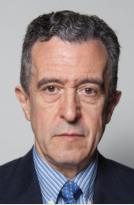Noticias


- Título: VTE patients with transient risk factors (“provoked VTE”) are being overtreated
- Fecha: 28-07-2015
Frank J Criado, MD, FACS, FSVM
More than 40% of VTE (venous thromboembolism) patients with transient risk factors receive anticoagulation therapy for 1 year or longer, and this is at least four times longer than the period recommended in current guidelines as observed by the authors of a recent large prospective cohort study (Thrombosis Res. 2015;135:666-72).
They found that patients with VTE associated with surgery had a 0.7% risk/patient-year of recurrence after 3 months of anticoagulation therapy, and those with transient nonsurgical risk factors had a 4% risk/patient-year of VTE recurrence. More importantly, these patients were more likely to have major bleeding events than recurrent VTE and were more likely to die of a fatal bleed than from a recurrent pulmonary embolism. Furthermore, 38% of major bleeds among patients with transient risk factors occurred during the first 3 months of anticoagulation therapy.
In a related interview shortly after publication of the article, lead author Dr. Walter Ageno said “our data suggest that in real life, physicians appear to be more concerned about the risk of recurrent VTE after discontinuing therapy than about the risk of bleeding.” He went on to state “clinicians base their treatment decisions on individual risk stratification, taking into account the location of VTE and the presence of additional risk factors for recurrence and bleeding. However, before adequately validated clinical prediction rules become available, this approach may expose a substantial proportion of patients, in particular those with VTE secondary to transient risk factors, to a possibly unnecessary risk of bleeding.” The American College of Chest Physicians recommends 3 months of anticoagulation therapy for patients with provoked VTE secondary to surgery or a transient, nonsurgical risk factor, and extended (possibly indefinite) anticoagulation for patients with unprovoked VTE or VTE caused by cancer.
The researchers gained insight into real-world practice through a prospective cohort study of 6,944 VTE patients in Italy, Spain, and Belgium. In all, 32% of patients had transient risk factors (recent surgery, pregnancy, long-haul travel), 41% had unprovoked VTE, and 27% had cancer. After excluding patients who died within a year after VTE, the authors reported that 42% of patients with transient risk factors were treated with
anticoagulants for more than 12 months. Predictors of extended anticoagulation therapy included age older than 65, chronic heart failure, pulmonary embolism at presentation, and recurrent VTE during anticoagulation.
Predicting risk of recurrent VTE is a tricky business, but until adequately validated clinical prediction rules become available, it would seem wise to re-think commonly used strategies and resist the temptation to “protect” patients presenting with provoked VTE and recognize that prolonged anticoagulation is more likely harmful (from bleeding) than beneficial. It remains to be seen whether this picture changes in the future with the newer anticoagulants now entering clinical practice.
- Fuente: endovascular.es





